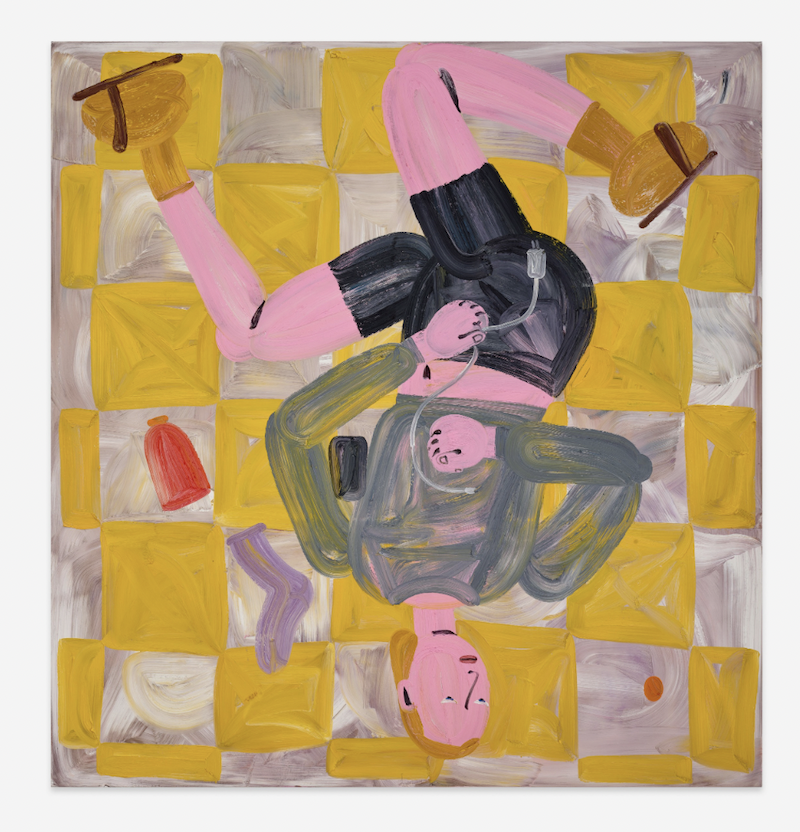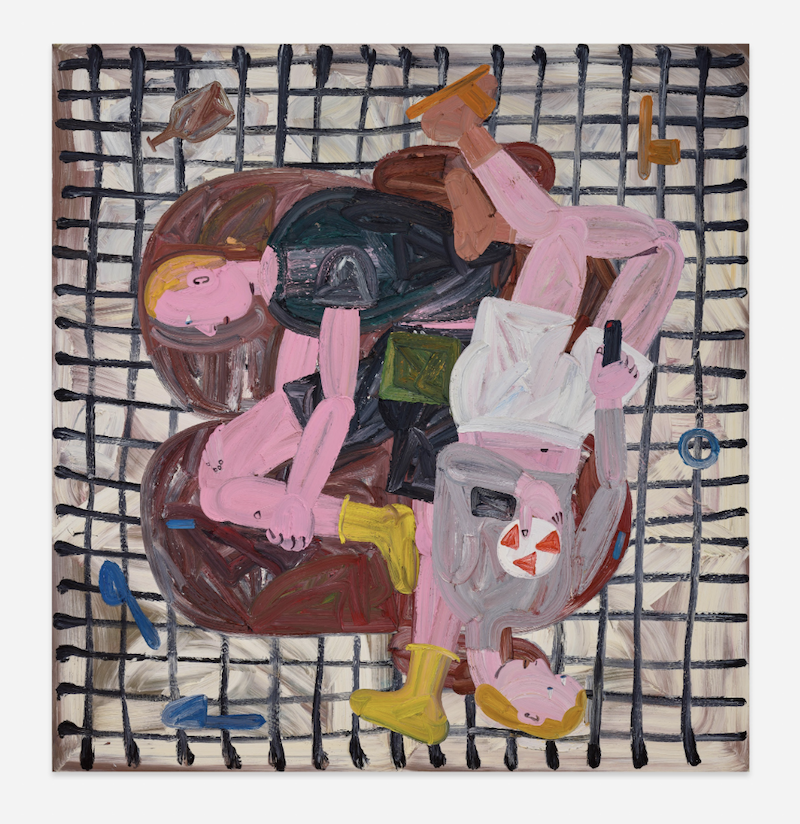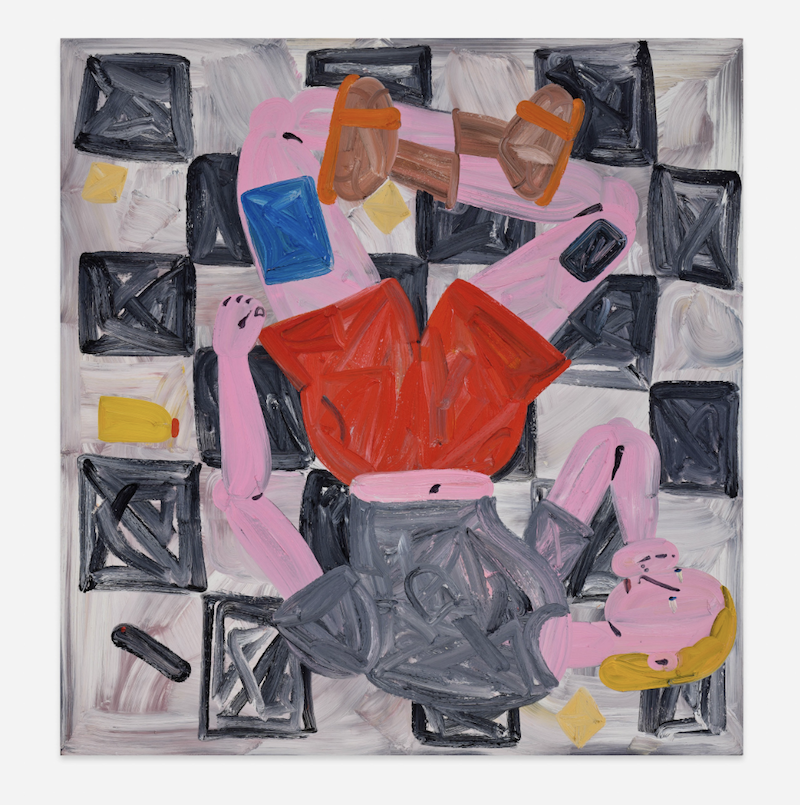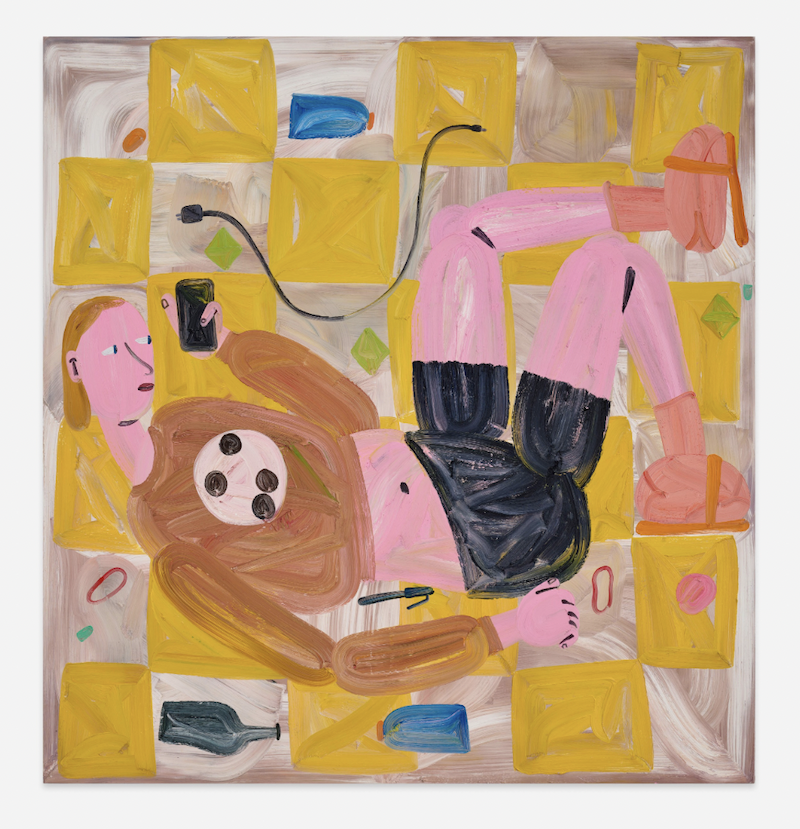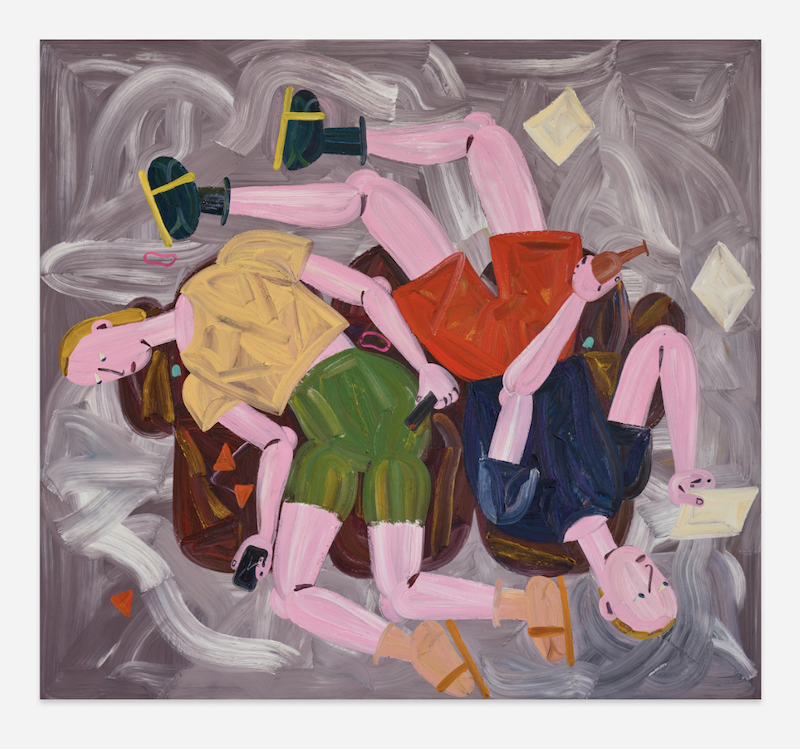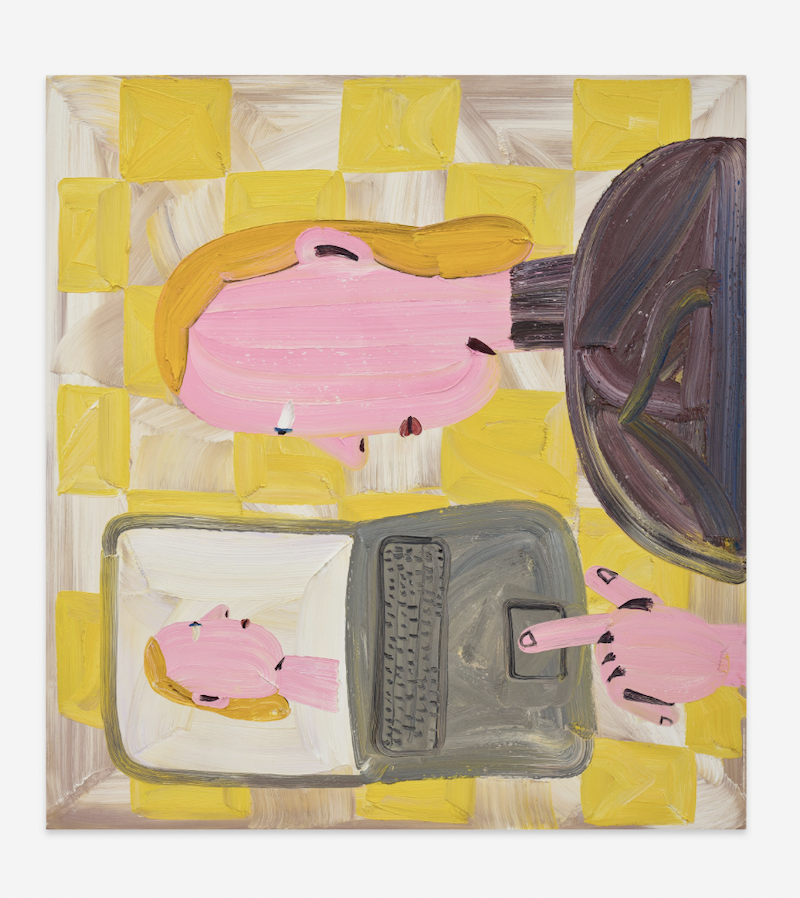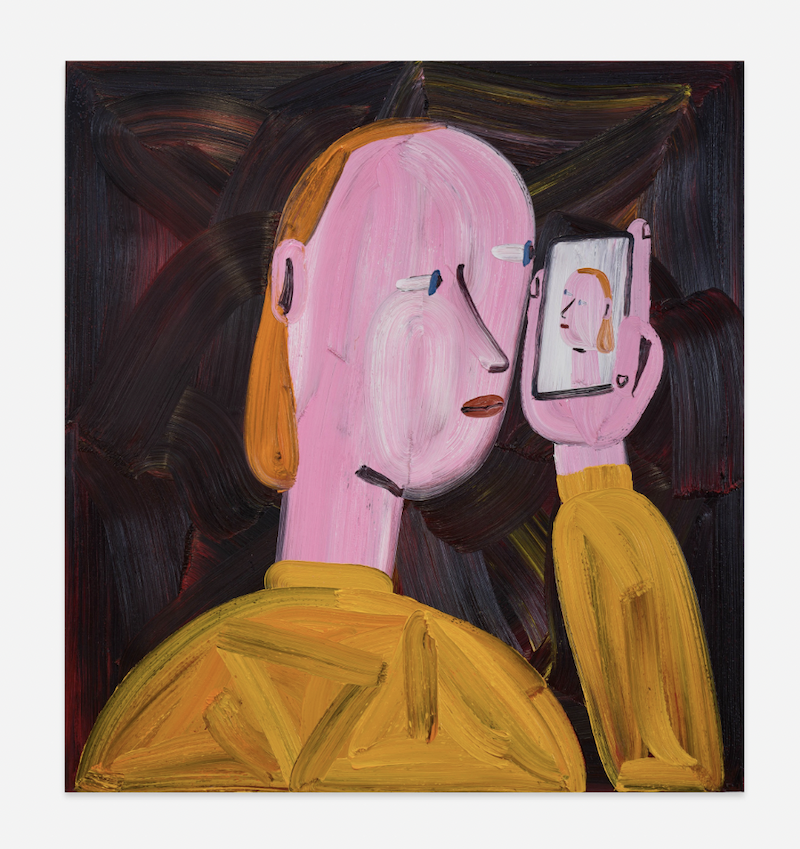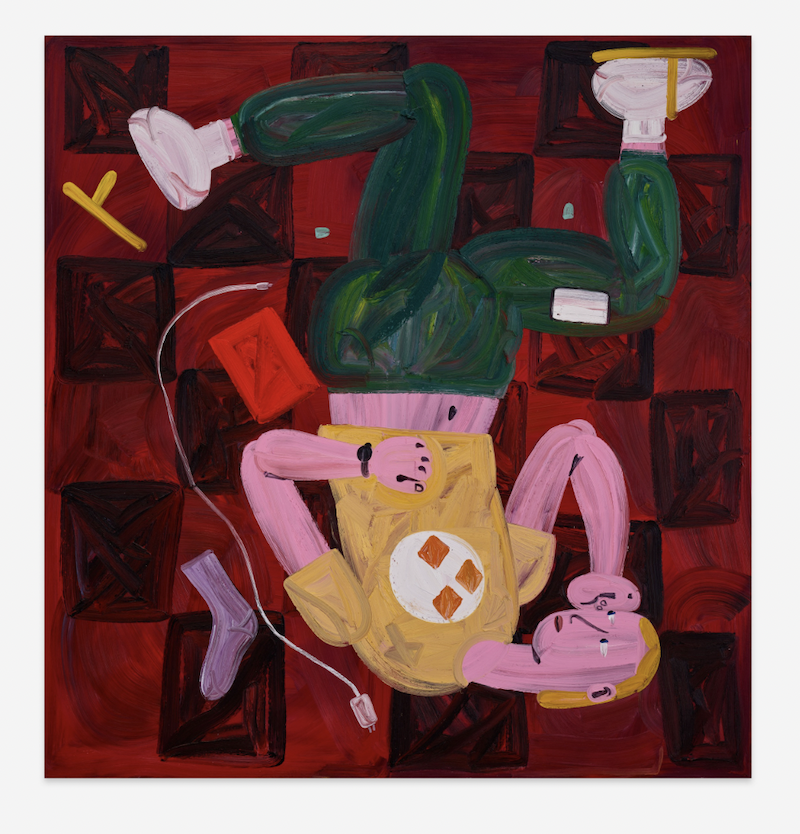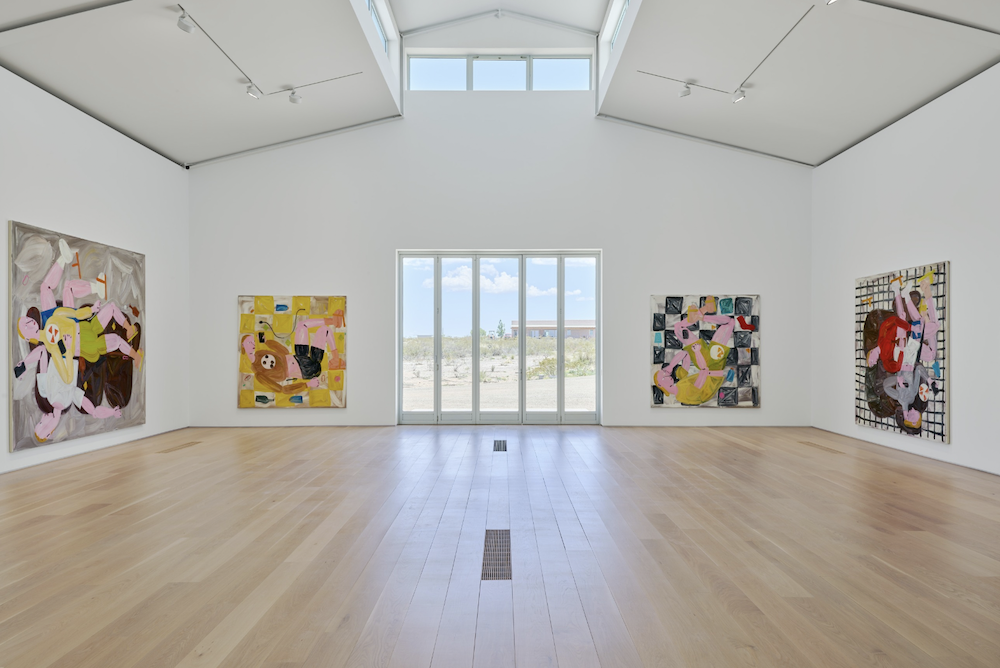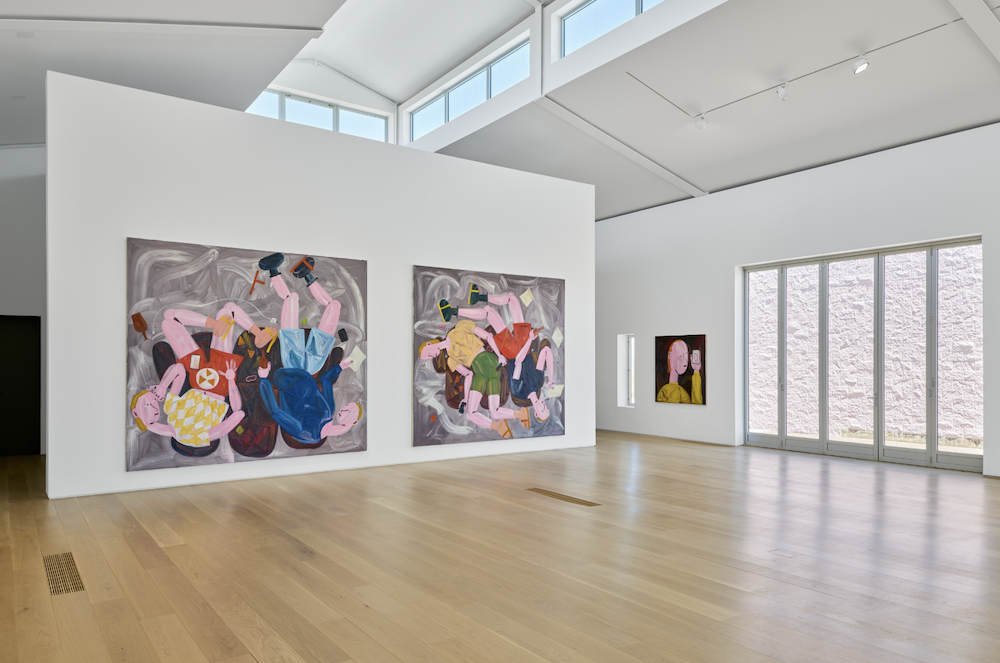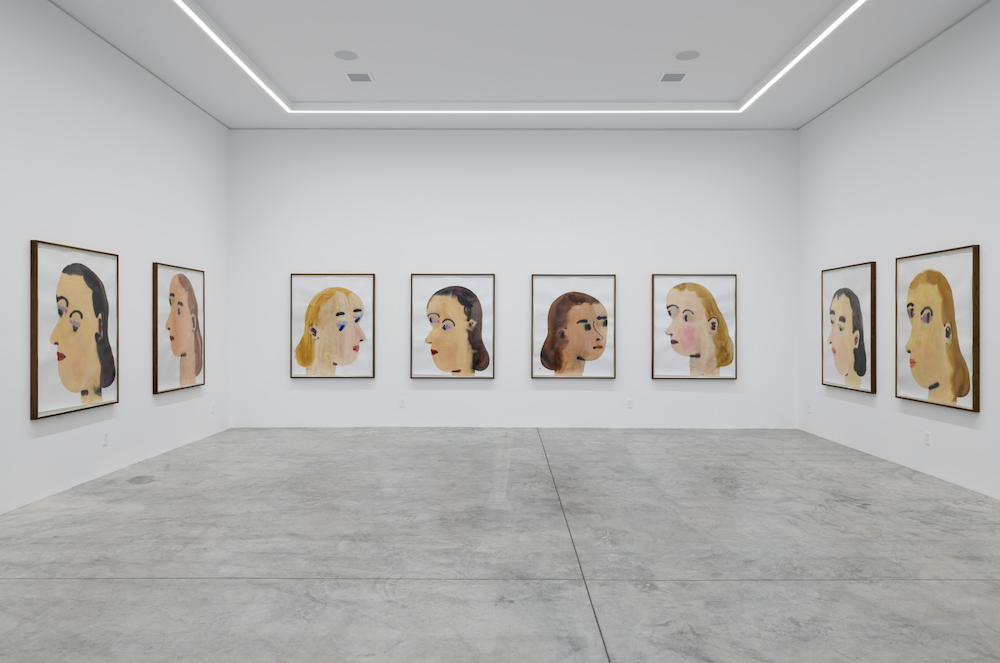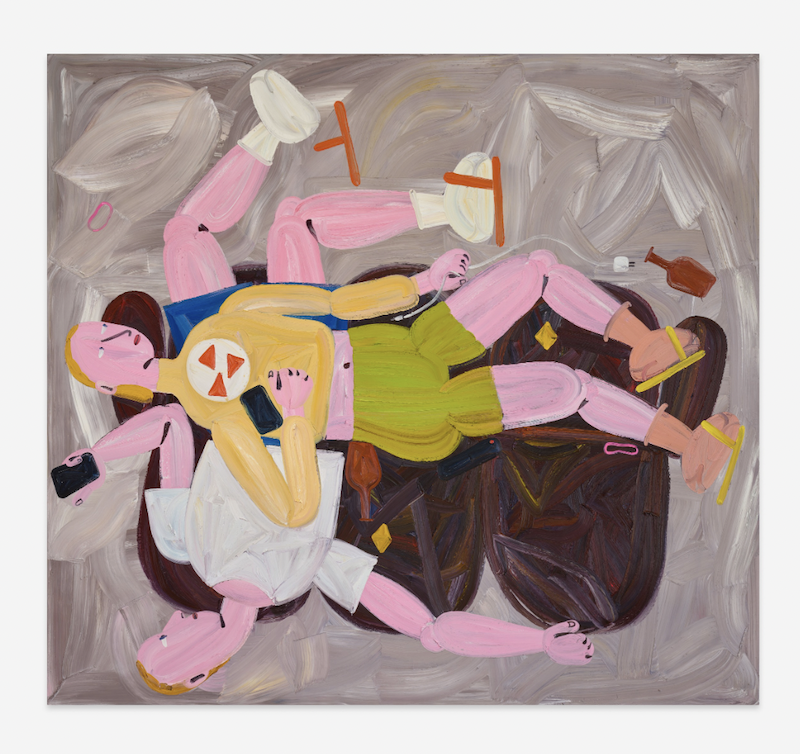HETZLER MARFA is pleased to announce Indoor Paintings, a solo exhibition of works by former Juxtapoz cover artist Grace Weaver made during a residency in Marfa, Texas. The exhibition includes a presentation of oil on canvas works in the main gallery and Weaver’s largest works on paper to date in the artist studio.
Presenting a new body of work, this exhibition sees Weaver’s iconic characters lounge in domestic environments. By bringing the figures into the private realm, the artist examines the spectrum of emotions that can arise when alone. Weaver’s larger than life figures possess a sense of ambiguity, their expressions unintelligible, evoking feelings spanning self-reflection to procrastination, relaxation to anxiety. Marking a continuum in the artist’s practice, Weaver probes the habits, yearnings and intuitions of daily life. While these moments are ostensibly mundane, and the domestic space often overlooked, Weaver’s paintings posit the value of these fleeting, un-monumental occurrences, and the potential of a finite space as a stage for a rich gamut of emotions.
Observed from an aerial perspective, quotidian objects of domesticity – phones, Doritos, a laptop, Gatorade bottles and chargers, are scattered across the scene, morphing at times into extensions of the characters' exaggerated limbs. Creating a swirling sense of space that the artist refers to as centrifugal, the Indoor Paintings map the tension of incorporating 21st century ephemera – junk food, fast fashion and technology – into painting, a strain which also plays across the palette. Bringing together bubble gum pink, dirty white, ochre and cornflower blue, the colours are nearly naturalistic, but skew towards the synthetic, highlighting the artificiality of the paintings themselves whilst emphasising their construction. Characters peer into laptops and phone screens, a contemporary mise en abyme.
In many of the works, body and object are superimposed over a gridded background, granting an architectural sense of structure in earthy red, acid yellow and chalky black. Alluding to Günther Förg’s and Edvard Munch’s painterly topographies, these formations capture the paraphernalia surrounding the figure, showing the layered approach of the painted surface. In other settings, the figures recline over brushy concrete grey backgrounds. Weaver coats the canvas in layers of oil paint, an additive process whereby paint is applied wet-into-wet. This application exposes their process, and the gesture of her painterly practice – marks and omissions remain, rendered by the gestural swoop of a brush, and in textural spikes of paint.
Toggling between phone, laptop, television and book, the characters, seemingly unencumbered by gravity, reflect the spiralling sense of distraction and absorption in a highly splintered world, presenting a synchronicity between subject and execution.





